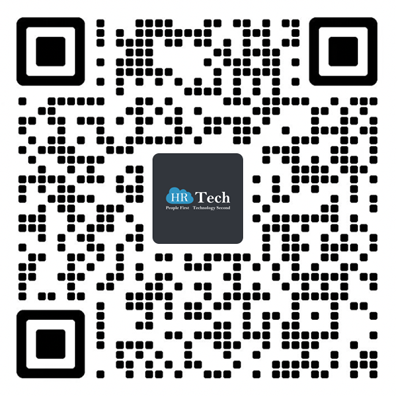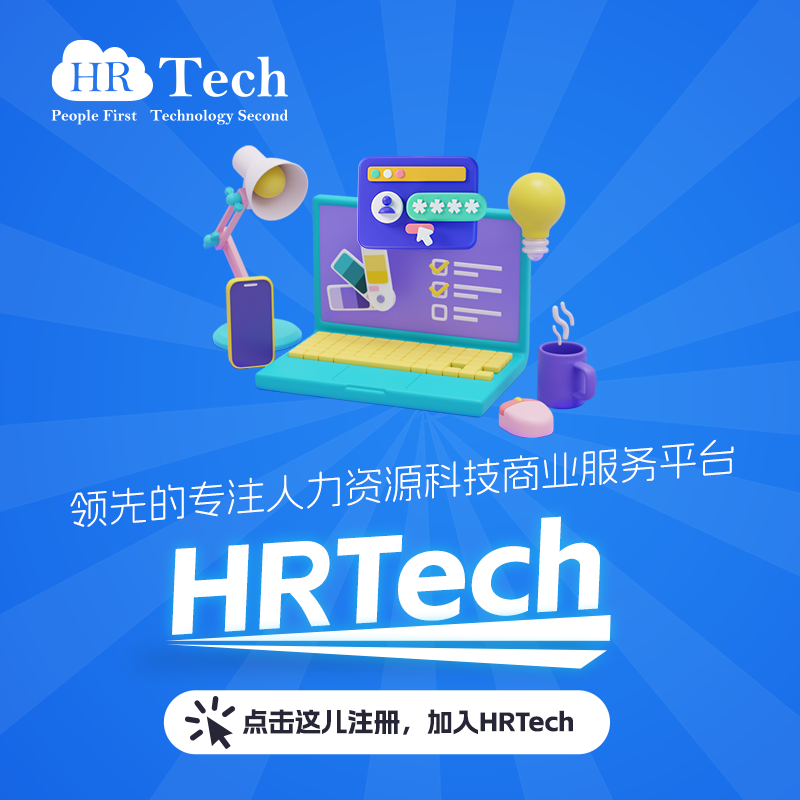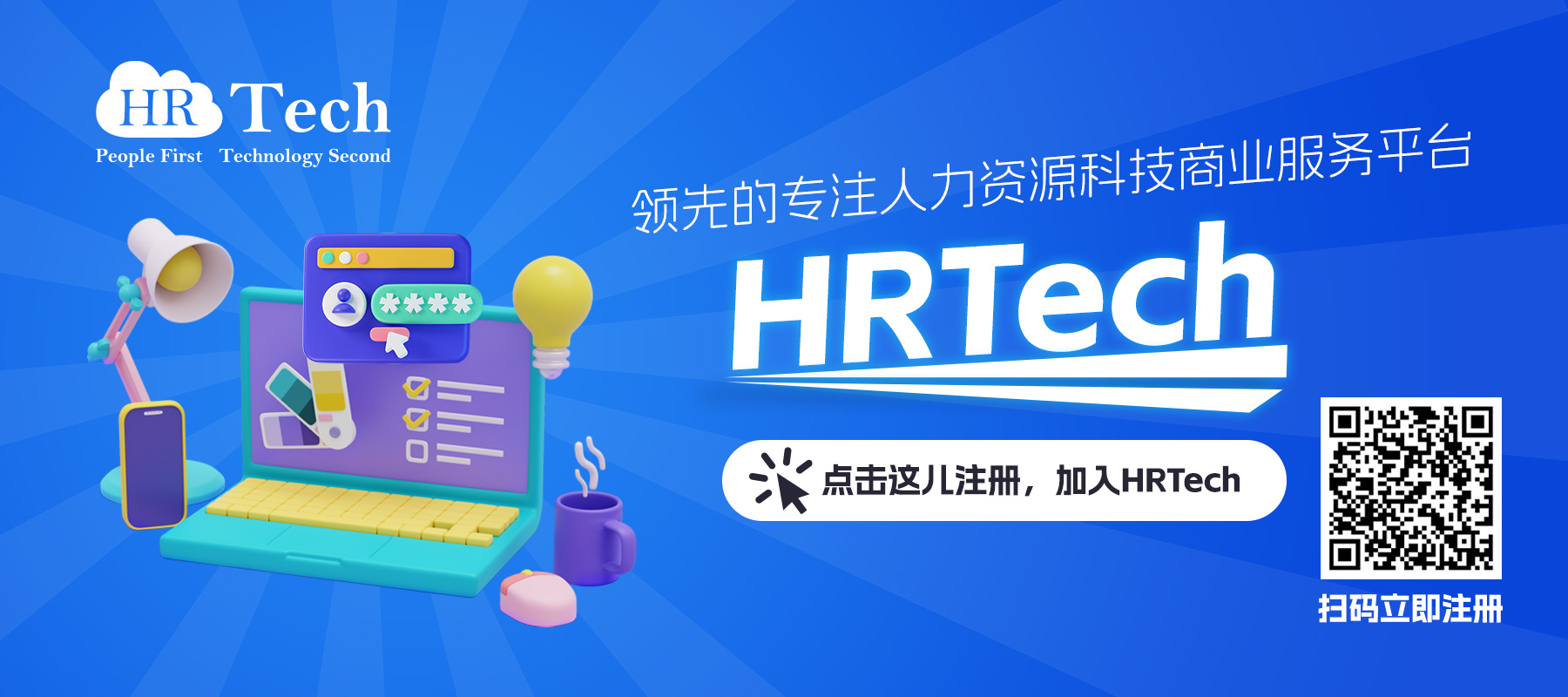-
 头条
头条
Glassdoor调查:2019年美国最好的15家科技公司
2018年是动荡不安的一年,尤其是对于像Facebook、谷歌、特斯拉和Salesforce这样的科技巨头来说。近日Glassdoor推出了2018年最佳公司排名,除了性骚扰和罢工,员工抗议和罢工因素(很明显,员工正在关注)。
不出所料,Facebook不再被评为在美国最希望工作的顶级大公司。经历了各种丑闻之后,Facebook的员工情绪从2018年第一季度的平均4.6分降至第四季度的4.3分。尽管如此,它仍然稳坐美国雇用千人及以上级企业的第七把交椅。
与此同时,Salesforce的评分从4.5分下降到4.4分,但它的排名从去年的第15位上升到今年的第11位。值得注意的是,没有一家科技公司获得超过4.5分的整体评级。然而在去年,顶级科技公司,如Facebook、谷歌和HubSpot的评分均为4.6分。总之,员工今年对科技公司的满意度普遍低于去年。
另外值得一提的可悲的事实是:这些公司都不是由女性、跨性别或双性恋人士领导的。
话不多说,来看看员工最喜爱的企业排行top15吧!
15. 微软(总体排名第34位,评分4.4)
CEO:Satya Nadella
(图片来源Getty Images,摄影者Mark Kauzlarich / Bloomberg)
微软公司首席执行官萨蒂亚·纳德拉于2018年2月7日星期三在美国纽约举行的纽约经济俱乐部活动中发表讲话。纳德拉讨论了科技公司需要接管人工智能未来的责任。
积极的员工评价: “工作清晰,成长,聪明的同事,福利。”
负面的员工评价: “团队中的薪酬,等级,根深蒂固的长期关系/忠诚使得新团队成员难以接受。”
14. Compass(总共排名第32位,评分4.4)
CEO:Robert Reffkin
积极的员工评价: “卓越的管理和领导力,令人惊叹的员工和代理人社区,非常注重成为最真实的自我,并最大限度地发挥自己的优势。”
负面的员工评论: “一天有401K会很棒!”
13. Adobe(总体排名第30位,评分4.4)
CEO:Shantanu Narayen
(图片来源Getty Images,摄影者Abhijit Bhatlekar / Mint)
2017年5月3日,印度孟买:Adobe董事长,总裁兼首席执行官Shantanu Narayen在孟买举行的圆桌会议媒体会议上拍摄。
积极的员工评价: “伟大的文化,有趣的人,世界一流的产品!人们渴望帮助并改善客户体验。”
负面的员工评价: “领导团队远离产品能力,误解了如何影响产品开发团队。”
12. SAP(总体排名第27位,评分4.4)
CEO:Bill McDermott
摄影师:Martin Leissl / Bloomberg来自Getty Images
积极的员工评价: “灵活,包容,创新的文化,丰厚的福利和薪酬待遇,这里有很多非常聪明的人。”
负面的员工评价: “长时间工作,经常快速变更,有时项目没有良好的变更管理。”
11. Fast Enterprises(总体排名第26位,评分4.4)
CEO:Martin Rankin
积极的员工评价: “很棒的薪酬和福利。支持,协作和回馈社区的强大文化。有趣的工作和在不同地点尝试不同类型项目的机会。”
负面的员工评价: “ 中等到高额的强制性或非强制性但尚未预期的加班时间。适合年轻,单身的专业人士,但对有家庭的人要求很高。”
10. Paylocity(总体排名第20位,评分4.4)
CEO:Steve Beauchamp
积极的员工评价: “产品很棒,我喜欢服务/开发团队。”
负面的员工评论: “随着最近管理层对销售团队的改变,文化已经过时了。从管理的角度来看,这家公司就像Paychex一样。记录每个电话,跟踪每小时,并告诉您他们是否想要您的意见。否则,除非被问到,在团队呼叫中会告诉我“闭嘴”。这不是5年前我被聘用的公司。”
9. 终极软件(总体排名第18位。评分4.4)
CEO:Scott Scherr
(照片由Issac Baldizon / NBAE通过Getty Images拍摄)
积极的员工评价: “伟大的公司和利益,强调让员工满意。”
负面的员工评价: “变化缓慢发生,并强调让员工满意,如果导致员工不满意,领导有时会害怕做出必要的改变。”
8. DocuSign(总体排名第17位,评分4.4)
CEO:Daniel Springer
积极的员工评价: “整体卓越的工作生活平衡和支持性管理。”
负面的员工评论: “没有晋升的途径。没有HSA或健身房报销。没有父母的激励或日托折扣。”
7. HubSpot(总体排名第16位,评分4.4)
CEO:Brian Halligan
(摄影:Dina Rudick / The Boston Globe via Getty Images)
积极的员工评价: “我现在已经在HubSpot工作了将近4年,而且在那个时候,我甚至没有考虑过工作。为什么?HubSpot是一个很好的工作场所。我觉得自己很有价值。我在工作的方式,时间和地点都有很多自主权。我对公司的使命充满信心。总而言之,我在这里非常开心。”
负面的员工评论: “随着公司的发展,扩展沟通和决策变得更加困难。幸运的是,对于许多致力于让沟通更轻松,更好的人来说,这是最重要的事情。”
6. Salesforce(总体排名第11位,评分4.4)
CEO:Marc Benioff
积极的员工评价: “非常支持环境。无限的学习潜力。积极的公司前景和道德。”
负面的员工评论: “像政治这样的大公司问题存在,虽然关于”平等“和”透明度“的说法很多,但对一些部门仍然是废话。许多内部项目由于缺乏领导能力或管理能力而失败,而且很多内部项目被淹没。”
5. 谷歌(总体排名第8位,评分4.4)
CEO:Sundar Pichai
积极的员工评价: “免费食品,补贴按摩,良好的福利都是真正的好处。他们还在科技方面做了很多有趣的工作。所宣称的开放性企业文化,扁平的组织结构和对员工真实自我的接受是一种良好的意识形态,尽管有时显然是一种失败的做法。”
负面的员工评价: “谷歌管理层在通过员工,办公空间和预算为项目分配足够资源方面出人意料地吝啬。这里的成功取决于你的老板在政治上的表现有多好以及你与老板的政治关系有多好,而不是真正专注于特定投资的优点 - 规模太大而不能准确地说到黄铜钉。”
4. Facebook(总体排名第7位,评分4.5)
CEO:Mark Zuckerberg
圣何塞,加利福尼亚州 - 5月01日:Facebook首席执行官马克扎克伯格在2018年5月1日在加利福尼亚州圣何塞举行的F8 Facebook开发者大会上发表讲话。Facebook首席执行官马克·扎克伯格(Mark Zuckerberg)在5月2日举行的FB开发者大会上发表了开幕主题演讲。(图片来自Justin Sullivan / Getty Images)
积极的员工评价: “在媒体提及和不良行为者滥用我们的平台后我们面临的挑战使我们团结起来,专注于解决问题。”
负面的员工评论: “ 工作生活平衡很糟糕。我的团队中的每个人都在正常时间,晚上和周末之外工作。没有人会明确表示你必须这样做,但考虑到竞争文化,你几乎需要额外的时间。”
3. LinkedIn(总体排名第6位,评分4.5)
CEO:Jeff Weiner
积极的员工评价: “硅谷最聪明,最有才华的领导人都在这里。”
负面的员工评论: “非常聪明的员工之间的竞争非常激烈。”
2. Procore Technologies(总体排名第4位,评分4.5)
CEO:Craig“Tooey”Courtemanche
积极的员工评价: “优秀的文化,世界一流的人和福利。”
负面的员工评论:“极度增长是它的挑战,意图是让事情正确。”
1. Zoom Video Communications(总体排名第2位,评分4.5)
CEO:Eric S. Yuan
积极的员工评价: “伟大的产品,事实上,在市场上最好。Zoom拥有惊人的优势和办公室的大量优惠。这里有一些伟大的,不可或缺的人在Zoom工作。我认为我的团队朋友中有很多人。CEO真诚地关心和倾听他的员工。”
负面的员工评论: “我担心这种文化在过去的一年半中已经发生了负面变化。有太多的销售人员 - 高层管理人员开始注意到,并做了一些激动人心的事情——让他们离开。除非你处于更高的领域,否则没有真正的领土被划分出来。看起来末端是组织的基底。”
以上为AI翻译,内容仅供参考。
原文链接: These are the 15 best U.S. tech companies to work for in 2019, according to Glassdoo
-
 头条
头条
2019年——人力资源科技年
文/Chieu Cao
从人工智能(仅在美国,几乎60%的消费者至少每月使用人工智能)到人力资源技术的创纪录投资的日益普及,一年多来,这个领域有很多发展。
我们已经看到有关公司是否应该在剑桥分析公司丑闻之后继续使用Facebook的问题,而针对#MeToo运动也有了定制的应用程序,如Spot,旨在抵消工作场所中的性骚扰的行动越来越受欢迎,更不用说在像谷歌这样的大公司出现的罢工行动。
但今年的主要变化是什么?我们学到了什么以及我们期望在2019年继续看到什么趋势?
让我们来看看。
大公司的入场
毫无疑问,2018年,几个原本并不属于人力资源领域的大型企业,已决定冒险进入市场。
就在上个月,Facebook推出了“Learn with Facebook”,目前可以免费访问,并且会议内容包括“ Ace Your Interview”和“ Manage Your Content Marketing”等。
另一方面,LinkedIn今年在其网站上也开设了13,000个学习课程,这是通过收购在线学习平台Lynda.com而推动的。该公司最近还收购了Glint,以提供其用户团队效率和员工生命周期解决方案。
随着人力资源技术的投资在2018年上半年达到6.42亿美元,这是我们预计2019年将持续的趋势。
远程工作进入主流
2018年,灵活和偏远的工作继续受到欢迎,并在许多国家成为常态,围绕其利弊进行无休止的辩论。 根据国际工作组的一份报告,全球超过三分之二的员工在2018年每周都在远程工作,超过50%的员工至少有一半的工作时间都这样做了。
Slack等工具越来越受欢迎,这有助于使远程工作更容易,也有助于突显这一趋势的普及。Slack今年5月的每日用户数达到800万,比之前的9个月每日600万用户大幅增加。
特别是千禧一代现在开始将其作为其工作生活的一部分,这是管理者调整其管理方式以满足远程和灵活工人的关键。信任员工的关键组成部分。
优秀的管理者与他们的团队建立了一种基于信任,承诺和参与的关系 - 设置边界而不是规则的设置。对于更传统的经理风格,这往往是一个挑战。随着更传统的管理者试图使他们的技能现代化,预计新一年的电子学习管理课程将会出现飙升。
心态转变:从员工敬业度到员工体验
2018年被称为员工经验或EX的一年,主流的谈话从员工敬业度转变为员工体验,如盖洛普,Glassdoor。
为什么?
如今,我们希望像对客户一样对待内部员工。体验很重要。它们影响了我们的态度,从满足到忠诚,幸福,关系和愿意更进一步。人们正在意识到这一点,并采取更多措施积极鼓励它。
其中一个最新趋势是添加AI来增强它。如埃森哲,他创建了一个COBE聊天机器人,让员工可以获得他们可能拥有的合规性问题的答案,而无需翻阅冗长的文档。托管该机器人的内部道德网站每周访问量超过2,000次,比他们推出机器人之前增加了20倍。
前进
我们期待2019年,有很多令人兴奋的事情。
未来面临的最大挑战之一可能是确保监管机构和技术建设者使用相同的语言,以保持行业以前所未有的速度增长,并确保创新不被扼杀。特别是当这些创新涉及Facebook等家喻户晓的公司时,它们目前正面临用户之间严重的信任危机。
另一方面,旨在克服远程工作局限性的新技术可能会得到改善,管理层与团队之间的沟通也将进一步加强。我们很快将掌握成为“全球劳动力”的艺术,就像我们在正式引入“世界公民”一词时所做的那样。
这是人力资源科技的又一个精彩的一年!
以上为AI翻译,内容仅供参考。
原文链接:2019 - The Year That Was In HR Tech
-
 头条
头条
如果你的CEO有职业教练,也许你也应该有一个
文/Simone Stolzoff
职业教练曾经为高层管理人员保留,作为员工福利的教练正在被少数但越来越多的公司采纳。利用教练可以帮助雇主回答员工对职业道路的疑问,并处理日常办公室紧张局势,而这些紧张局势往往席卷企业。
随着公司寻求对其员工福利及公正的支持,管理人员或人力资源部门无法提供大规模的服务,许多新的职业培训即服务提供商开始出现。Bravely成立于去年,已经拥有众多备受瞩目的客户,其服务配对工人与外部职业教练。其客户包括生产力公司Evernote和非营利组织Venture for America。还有一些其他初创公司,如Loris.ai 和非营利组织,如Empower Work,旨在解决类似的工作场所健康问题,但职业培训即服务行业仍处于初期阶段。
Hireology是一家总部位于芝加哥的创业公司,为小企业建立招聘软件,过去一年开始为其200名员工提供雇主赞助的培训。许多人刚刚开始他们的职业生涯。
“对于我们的员工来说,Hireology是他们大学毕业后的第一份或第二份工作,” 软件公司首席运营官Julie Brinkman说。“我们非常依赖人力资源方面,但我们仍然希望给予他们专业的支持。”
Hireology自2010年推出以来筹集了2600万美元,并获得了Bravely的帮助,该公司向企业收取年费,该费用根据公司的规模而有所不同为员工提供免费指导。
雇主支付雇员向外部顾问寻求职业建议似乎违反直觉。毕竟,如果教练导致人们决定寻找新工作,新领域或新雇主怎么办?
但像Hireology这样的公司相信帮助工人了解他们的动机并解决他们的不安全感最终会对企业有利,即使员工认为他们会更乐意在别处工作。
教练:这不仅仅适用于高级管理层
当教练在20世纪70年代和80年代首次在公司环境中流行时,它通常被保留给高级管理人员,以帮助他们发展成为领导者。对于低级员工的职业支持,如果可以获得的话,通常以学徒制或严格的培训计划的形式出现,旨在推动人们晋升。
然而,企业削减成本削减了这些计划,让工人们找到自己的职业道路。当千禧一代进入劳动力市场时,员工们开始期待甚至更愿意选择不太可预测的路线。
“我们的工作环境与以往截然不同,”在Pinterest开展职业发展并指导私人客户的Rachel Lockett说,“人们通常工作两到三年而不是几十年。虽然管理人员对您当前的职责负责,但他们不负责帮助您制定职业发展轨迹。”
在职业阶梯后阶段,人们从一个工作岗位到另一个岗位,从一个公司到另一个公司,工人们都承担着更多的职责。但与此同时,人才争夺战,尤其是创业公司和大型科技公司之间的争夺战,雇主们渴望表现出投资于员工成长和发展的意愿。正如Hireology所发现的那样,教练是一种在公司各个层面投资人才的有说服力的方式。
尽管Hireology通过Bravely为教练提供支付,但教练与Hireology员工的互动仍然保密。员工使用他们的个人电子邮件地址注册,除了使用服务的频率之外,Bravely不会将任何信息传回给Hireology管理层。这有助于避免一些人力资源专业人员的双重约束,他们可能希望以工人的最大利益行事,但最终有义务维护公司的利益。
“我们不是来解决组织的问题,”Bravely的联合创始人兼首席执行官Toby Hervey说。“我们来帮助员工开始谈论他们的想法。”
该服务不仅对不满足于工作或选择领域的人有用。勇敢地为满意的工人提供尽可能多的价值,他们可以用一些帮助来指导他们的抱负。但最终由公司创建一种文化,让员工感到自在地说出自己的想法,并让员工将他们从教练那里学到的东西付诸实践。
“我与脱离接触的员工所看到的是,他们经常扮演正确的角色,或者至少与正确的角色相关,”Lockett说。“但他们需要了解为什么他们会做他们做的事情,以及如果他们现在没有成长,他们将如何成长。”
一个很好的聊天
为了更好地理解个性化教练的力量,我最近决定体验一下Bravely。我通过公司的应用程序在线预约,这更像是在水疗中心预约而不是专业的发展培训。(因为Bravely是员工福利,通常您的公司必须先订阅才能注册。)
我花了大约45分钟的电话与我的教练一起反思我的价值观以及我对工作的最后几周的感受。会议为我通常考虑我的工作的思路提供了一个很好的改变; 如果在一周内有如此多的新投入,那么很难退一步。在通话结束时,我的教练建议我们进行角色对话,要求我的经理加薪。
这一切都感觉非常低风险——就像与理发师的对话,他在一家大公司碰巧拥有二十年的人力资源经验。虽然我的教练并没有详细说明具体细节,但她的整个职业生涯都是在人力资源部门工作,为一家雇佣“成千上万人”的公司工作。
那天下午回去工作,我感觉更轻松了,我表达了一些我还没有说过的专业焦虑。
但最终这次“教练”体验更多的是寻求支持不是解决任何特定问题,并以我希望的整体生活方式来改变我的职业生涯等方面进行探讨。
在丹尼尔·平克的“纽约时报”畅销书“ 驱动器:关于激励我们的令人惊讶的真相”中,他声称金钱并不能激励我们做最好的工作。相反,它是一种掌握,自主和目的的推动力,促使我们发挥最大的作用。
如果教练能够帮助员工在这些方面更有能力发挥作用,那么雇主越来越愿意为此付出代价。
AI现在会见到你
不只是创业公司看到了为人们提供指导的价值。美国最古老的雇主之一正在推出一项计划,以帮助工人在公司中获得晋升机会。其拥有18,000名员工,需要一支可以为群众服务的职业教练。
Citizens Financial Group是一家成立于1828年的新英格兰地区银行,最近开始与IBM (paywall)合作,为其员工提供虚拟职业教练。MyCa,因为该系统被称为(My Career的简称),由IBM Watson的人工智能技术提供支持。它使用聊天机器人来了解员工的经验和愿望,然后在公司内部建议可能感兴趣的工作机会,并解释员工为了获得职位而需要开发的必要技能。
“我们正试图改变人们对职业生涯的看法,”同时让他们掌握快速变化的工作技能和要求,公民首席人力资源官Susan LaMonica说。“说分公司经理想成为一名私人财富顾问。MyCa可以帮助他们了解角色的技术要求,差距,以及他们如何学习新技能。”
帮助员工策划职业道路对于公民范围的公司来说尤其有意义; 从分行银行业务转变为商业贷款业务,再到资产管理职位的潜力,意味着员工可以在同一公司保护伞下表面上尝试不同的职业。
当然,存在一种风险,即将教练任务外包给人工智能计划将使员工感到更加偏离雇主。但是,更有可能的是,该计划正在做的工作是,各地的管理人员通常要么太忙,要么没有足够好的自己训练。如果是这种情况,则AI程序是附加的,而不是人类当前处理的工作的不露面替代品。
“现在职业生涯更加流畅,”LaMonica说,“我们希望帮助人们了解他们的同事今天所拥有的技能和经验......这样他们就可以在这个新的世界经济中保持相关性。”
在未来的工作场所,这可能是所有人最重要的员工福利。
以上为AI翻译,内容仅供参考。
原文链接:If your CEO has a coach, maybe you deserve one too
-
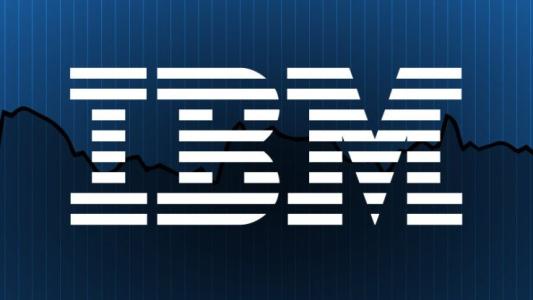 头条
头条
IBM人才业务使用AI来重新思考现代员工队伍
随着人工智能(AI)承诺改变工作的未来和人力资源(HR)功能,IBM(纽约证券交易所代码:IBM)于11月28日宣布推出IBM Talent&Transformation,一项新业务公司及其员工在人工智能和自动化时代蓬勃发展。IBM Talent&Transformation不仅提供强大的AI技能培训,还帮助公司推动使用AI为员工提供支持,转变工作流程,消除偏见和建立现代员工队伍所需的转型。
虽然首席执行官和员工都认为人工智能将改变工作场所,但最近的IBM研究表明,很少有人愿意利用人工智能的潜力:
根据IBM的最新研究,在未来三年内,全球10大经济体中有多达1.2亿工人可能因人工智能和智能自动化而需要接受再培训或重新培训。
IBM的一项研究发现,三分之二的CEO表示人工智能将在人力资源方面发挥重要作用,但只有11%的首席人力资源官员报告说,他们的组织拥有实现这一潜力所需的人工智能,数据科学和机器学习技能。
美国和英国84%的就业成年人认为AI可以带来竞争优势,但超过一半的人不相信他们的公司可以利用人工智能获得竞争优势,超过一半的人认为公司文化将成为采用的障碍。由Harris Poll代表IBM进行的一项研究。
“随着企业应对通过应用人工智能,自动化和区块链等新技术进行数字化转型和重塑业务和流程的双重需求,进步的最大障碍在于获取合适的人才和技能,”马克说。 Foster,IBM全球企业咨询服务部高级副总裁。“IBM认为,建立一支在人工智能时代竞争的员工队伍与文化和专业知识一样,都与技术有关。”
在IBM Talent&Transformation的帮助下,AI可以被引入具有影响力和责任感的组织,并成为人力资源组织的催化剂,从服务功能转变为增长引擎,帮助公司吸引和留住多元化,高技能的员工队伍并随着业务的未来而发展。
IBM Model,Enterprise Ready
IBM的新服务,AI工具和相关培训计划学习了IBM应用于推动自身劳动力转型的方法和技术。这些服务利用人工智能个性化的力量来指导员工发展技能并寻求在公司内部发展的机会。它们还允许人力资源团队测量主动保留的飞行风险,并使用偏差减少功能来标记招聘工作中的偏见,例如职位描述中的语言。当应用于IBM自己的人力资源部门时,这些服务为公司带来了超过3亿美元的收益,仅2017年就实现了1.07亿美元的收益,从而显着提高了候选人,员工和经理的满意度。
IBM已与客户合作,成功完成全球1,000多个人力资源转型项目。通过咨询业务或将人才收购,人才开发或人力资源业务外包给IBM,Shire plc等组织正在重新制定人力资本战略以推动业务增长。
人工智能可以补充员工技能,重新定义任务并提高生产力,但这需要培训,发展和新的工作方式。IBM AI技能学院是一项新的服务产品和教育计划,将帮助企业在整个企业内规划,构建和应用战略AI计划,如评估AI角色和技能,建立必要的技能,以及创建支持AI战略的组织结构,同时得到IBM专家资源的支持。
该产品面向商业和技术专业人士,从一线经理到市场营销,人力资源,法律,财务和运营等领域的高级管理人员,使他们能够在公司的工作流程中找到新的价值机会。课程涵盖了人工智能计划所必需的领域,包括深度学习和机器学习框架,应用算法,开源技术和数据可视化,并将确保企业在“直觉”上做出较少的决策,而在数据驱动的分析上做出更多决策。
为了寻找合适的人才并帮助现有员工提升自己的职业生涯,IBM Talent&Transformation与Citizens Financial Group Inc和Ernst&Young LLP等组织合作,应用IBM Watson Talent产品。由行为科学,人工智能和工业组织心理学专家开发,以下解决方案利用分析和AI的预测能力:
Watson Recruitment:分析组织的就业历史和外部数据来源,以确定任何特定角色成功的关键属性,然后使用AI来表现最合格的候选人而无偏见。
Watson Candidate Assistant:筛选求职者的就业和教育经验,推断技能,并将候选人与最适合传统申请人跟踪系统可能无法提出的建议的空缺职位相匹配。
Watson Career Coach:作为虚拟教练,推断员工的技能,兴趣和卓越,并提供个性化的建议,为职业发展机会铺平道路。
Watson Talent Frameworks: 定义当今成功的人才战略所需的能力和技能,以及面向未来的组织,为未来的员工提供针对其特定行业和需求的定制方式。
Adverse Impact Analysis(AIA):利用Watson AI分析,识别和解决组织与性别,种族,年龄,教育和以前就业相关的就业历史中的无意识偏见。
为了获得AI优势,公司还必须改变他们的工作方式,工作地点以及他们用来指导工作的原则。
为了促进这一变化,IBM正在推出IBM Garage,旨在开发敏捷功能并改变工作方式。在Garage中 - 作为企业内部数字和AI转换的物理实例--IBM专家与客户员工肩并肩地开发新想法,然后快速测试,丢弃或推进这些想法。在旨在摆脱日常生活的环境中,消除了传统的孤岛和障碍 - 鼓励员工通过实践,快速失败和经常迭代,激发组织变革和支持来学习。IBM Garage是一个工具,用于执行,扩展和管理组织的多个转型计划,在市场中断的情况下具有战略目的。
以上内容为AI翻译,仅供参考。
原文链接:IBM Talent Business Uses AI to Rethink the Modern Workforce
-
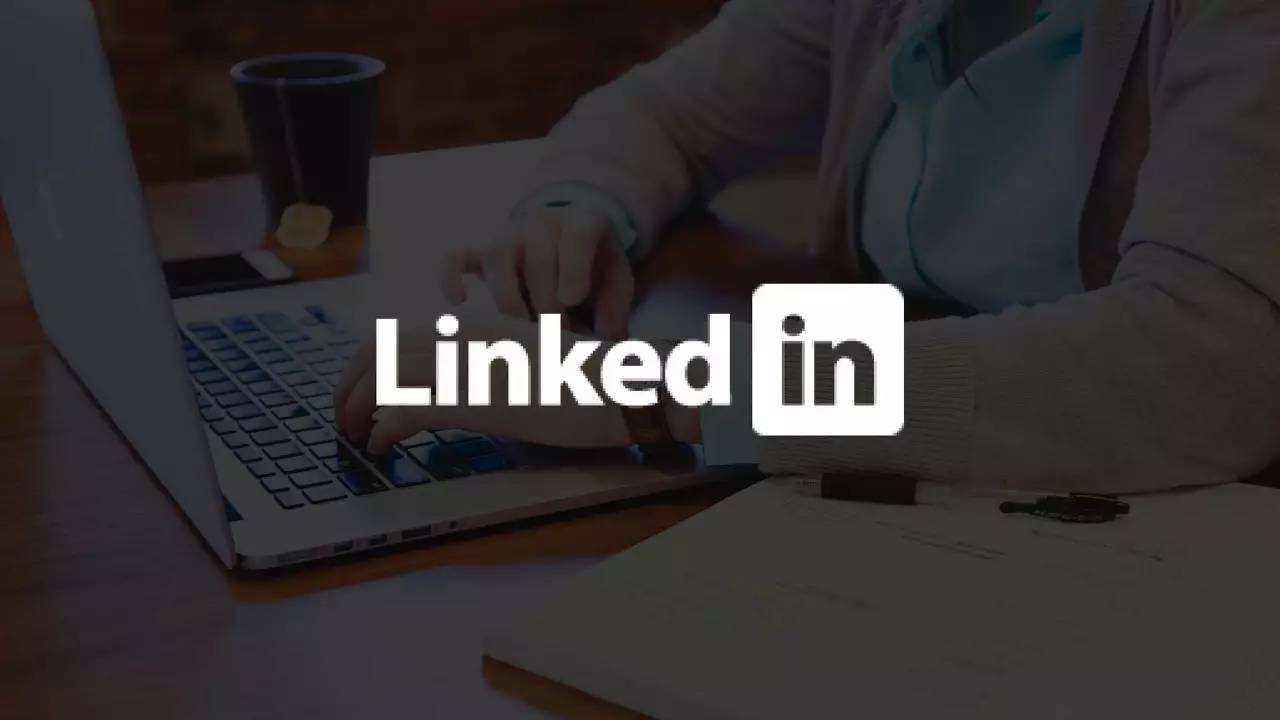 头条
头条
LinkedIn将于2019年推出ATS
文/Roy Maurer
LinkedIn最近宣布,它正在进入申请人跟踪系统(ATS)业务,并计划在2019年为中小型公司发布其人才中心ATS。
该系统与LinkedIn Recruiter配对,后者是该公司的候选采购平台。二十个客户正在试用人才中心; 明年开始实施一项试点计划,ATS将于2019年下半年在全球范围内推出。它面向的是雇员不超过1000人的中小型企业。
“我们不仅在努力使我们的产品更加一体化,还在全面重塑LinkedIn Talent Hub的候选人管理经验,”LinkedIn Talent Hub产品营销负责人Sarah-Beth Anders说。
Talent Hub旨在让招聘人员和招聘经理更容易在单一平台上进行协作,使他们能够在整个流程中管理候选人,并通过入职进行采购,而无需离开LinkedIn。
Anders说,断开连接的系统和重叠工具会导致许多雇主效率低下,并减缓招聘流程,在某些情况下会导致候选人丢失。
她说,一个综合系统也将支持合作。“我们从招聘经理那里得到的最大抱怨之一就是招聘团队没有可见性。招聘经理经常感到沮丧的是,他们不是流程的一部分,也不知道他们的公开要求的状态。 通过Talent Hub,您可以分享访谈反馈,发表评论,甚至跟踪招聘状况和背景调查的状态。“
该系统还将让用户利用LinkedIn的大量数据集来做出更明智的招聘决策。“你将能够利用我们丰富的数据来准确了解可用的人才库,并了解候选人如何与贵公司合作,”Anders说。“用数据武装自己可以帮助你设定切合实际的期望,并且通常可以带来更强大的招聘。更重要的是,你会看到谁已经跟随你的公司,谁有机会接触新机会,谁与你公司的人有联系 - 所有这一切都在一瞥。“
SourceCon的编辑Shannon Pritchett是一个网站和源代码国际会议系列,他对LinkedIn构建系统所采用的逆向工程方法印象深刻。“一般来说,大多数申请人跟踪系统都不是围绕搜索建立的,”她说,这使得他们在采购方面感到沮丧。
观看该系统演示的Pritchett解释说,一旦招聘人员开启新的申请,他或她将立即收到与公开招聘相关的人才数据和LinkedIn上符合工作要求的候选人名单。“一旦这个职位上线,你就会立即开始查看搜索结果,”Pritchett说。“当然,这是我最喜欢的部分,一个采购梦想成真。我记不起任何一个来源或招聘人员曾经将申请上传到他们的安非他明类兴奋剂的时间,并且可以立即获得一整套合格的候选人。”
候选人搜索结果可以包括以前申请过贵公司的候选人,目前正在招聘公司的候选人,以及表示他们愿意接受新机会的候选人。过滤器可以显示不同候选人的不同类型。
Anders表示,Talent Hub并不仅限于LinkedIn上的候选人。它可以作为一个能够从LinkedIn以外导入候选人的ATS,虽然该系统面向雇主在LinkedIn上进行大部分采购,但仍有计划与其他人才来源和工作委员会整合。
人力资源技术资深人士乔治·拉罗克(George LaRocque)是新泽西州新普罗维登斯(New Providence)的HRWins的创始人和首席分析师,他们认为该产品的发展空间。“LinkedIn在招聘广告和候选人资料数据方面的深度使他们能够从一个全新的角度来看待招聘工作流程和ATS类别,但真正的ATS不能只有一个来源 - Talent Hub必须成为源不可知的真正有价值的ATS,“他说。
同样观看演示的LaRocque表示,Talent Hub令人印象深刻,但“一切都基于一个封闭的环境,工作发布在LinkedIn上,求职者在那里找到了工作。LinkedIn是一个主要的人才来源,尤其是在人才中心关注的细分市场,但它不是唯一的主要人才来源,”他表示,“为了为客户提供真正的价值和洞见,他们需要将工作岗位分配给其他有竞争力的人才来源,并接受来自这些资源的人才。”
LinkedIn已经通过其Recruiter System Connect与18个ATS合作伙伴(包括Cornerstone,Greenhouse,Lever和Taleo)进行了整合,允许用户在LinkedIn Recruiter和各种ATS之间共享重要的候选信息。
以上为AI翻译,内容仅供参考。
原文链接:LinkedIn to Launch ATS in 2019
-
 头条
头条
重磅启动:2018中国顶级人力资源科技年度大奖评选,致力于中国权威、顶级、影响力的人力资源科技大奖!
2018中国人力资源科技年度大奖评选
Welcome to the 2018 HRTechChina Annual Awards!
致力于中国权威、顶级、影响力的人力资源科技大奖!
即将过去的2018年注定是值得载入史册的一年!
科技发展的起起伏伏,各种新技术新应用的出现和落地,越来越多的人力资源科技生态系统被构建。
改变人力资源科技的格局,改变我们工作的方式和公司组织的管理方式。在这时代变革的过程中,我们中国人力资源科技深入参与其中,广泛的应用实践,让我们的人力资源科技产品极大的改变了企业,改变了工作者。
2018年涌现出非常多有价值的探索,最佳的落地实践,优秀的创业者以及企业中扎实推进科技与人力资源工作结合的卓越经理人们,更有背后推动技术在人力资源领域得到广泛应用的技术人员...所有这些共同构建了中国人力资源科技的壮丽画面,让我们有机会一起来再次打开中国的2018年人力资源科技画轴。
中国庞大的移动互联网用户以及多样化的环境产生了大量独特的应用场景,加上变革过程中的市场环境,使得我们的人力资源科技不同于世界其他国家的发展模式,借鉴但不迷信,更要超越和引领,这就是中国人力资源科技。
由此我们发起中国人力资源科技大奖的年度评选活动,我们将对参与人力资源科技实践的经理人、科学家以及为中国人力资源科技行业做出贡献的机构,产品给予肯定,进行评选颁奖。并且HRTechChina也将不遗余力地为此进行宣传传播,一起推动中国人力资源科技的快速发展,惠及人力资源工作者和组织业务发展。
同时号召行业内最优秀最前沿的人力资源科技和服务机构,用户、技术官、企业或者团队,创业者来参与我们的评选,向世界介绍中国人力资源科技行业的引领者和塑造者!
HRTechChina作为中国首家关注和垂直报道人力资源科技领域的平台和媒体,自2015年起我们持续不断地为中国行业同仁传递最快最新的全球人力资源科技资讯,影响和引领中国人力资源科技行业的进步和发展。多年来我们建立向世界传达中国人力资源科技的窗口,让世界了解中国人力资源科技的巨大能量和迅猛势力。未来,我们仍将致力于提供及时,全方位的人力资源科技资讯和商业新闻,以及增设更富洞察力的商业深度报道等媒体内容,继续为用户提供最好的信息,知识,观点,趋势。
这,就是一场推进中国人力资源科技进步的饕餮盛宴,更是一场我们中国自己的人力资源科技产品/机构向全世界展示的绝佳亮相!
颁奖盛典暨高端论坛
时间:2019年1月 地点:上海 规模: 300位嘉宾形式:颁奖典礼 + 高端论坛
年度大奖奖项设置
【产品类】2018年度人力资源科技创新产品奖(可细分)
【产品类】2018年度人力资源科技最佳产品奖(可细分)
【产品类】2018年度人力资源科技最佳AI产品奖
【投资类】2018年度人力资源科技最佳投资人
【投资类】2018年度人力资源科技最佳投资机构
【机构类】2018年度人力资源科技最佳服务机构 (可细分)
【机构类】2018年度最具投资价值的人力资源科技公司
【机构类】2018年度最受企业欢迎的人力资源科技公司
【营销类】2018年度人力资源科技最佳数字化营销奖
【创业类】2018年度人力资源科技最佳创业公司
【创业类】2018年度人力资源科技最佳女性创业者
【实践类】2018年度人力资源科技最佳实践奖(仅限企业)
【实践类】2018年度最佳招聘科技实践奖(仅限企业)
【技术类】2018年度人力资源最佳CTO/科学家/数据官
【个人类】2018年度HR SSC卓越经理人
【个人类】2018年度HR Tech十佳经理人
参与评选的理由
构建和宣传公司和产品及服务的华丽舞台和绝佳渠道
人力资源科技产品与企业需求直接对接的良好时机
全球化的人力资源科技传播方案和途径
案例将加入HRTechChina 案例库,并通过平台广泛宣传和阅读
线上线下参与主办方的分享活动,全方位的曝光机会
提升企业曝光率,加强其在细分领域内的卓越表现的影响力
第一时间掌握2019中美人力资源科技发展趋势
成为人力资源服务行业各领域需求市场的最佳选择
最大化利用评选结果,进行对产品的对外市场宣传
发挥在其领域的领导作用,促进产品创新和行业发展
奖项使用
官方网站
中国领先的人力资源科技的垂直媒体平台-HRTechChina将联合其他知名新闻频道实时播报评选进展和发布评选结果。
官方公众号/微博
HRTechChina官方微博以及官方微信(微信号:HRTechChina)独家跟踪评选进展,相关报道将被上万企业的人力资源总监和经理、CEO、人力资源专家、投资人及其他策略性商业决策人士广泛阅读。
综合媒体
评选结果,品牌露出宣传稿件等通过今日头条/搜狐/网易/腾讯等众多国内顶尖媒体进行宣传展示;届时将被广大人力资源阅读和知悉。
海外媒体推广
评选结果及榜单,我们将及时通过Facebook\Twitter\Youtube\Linkedin\NACSHR等海外平台进行推广及发布,届时将被海外的人力资源领域的从业者和相关人士广泛阅读和获知。
马上参与评选:
http://hrtechchina.mikecrm.com/5ca50fL
参与评选联系:
联系邮箱: awards@hrtechchina.com
参展赞助联系
联系人:Annie
联系微信:186 2129 2818
更多信息,随时更新~
最后更新2018.12.4
-
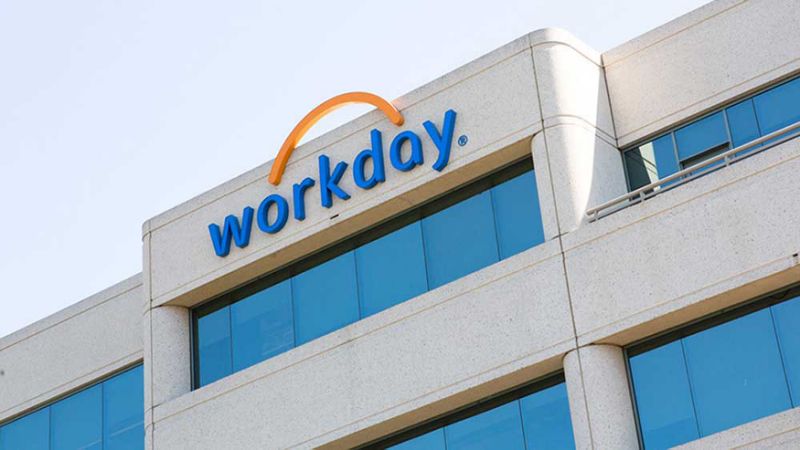 头条
头条
Workday第三财季财报靓丽,股价创历史新高!营收7.43亿美元
11月29日Workday(股票代码:WDAY)公布财报,公告显示公司2018财年第三财季归属于普通股东净利润为-1.53亿美元,营业收入为7.43亿美元。
相关数据如下:
总收入为7.432亿美元,同比增长33.8%
认购收入为6.244亿美元,同比增长34.7%
订阅收入积压为59亿美元,同比增长31.0%
该公司还提出了第四季度的指导意见。
Workday的联合创始人兼首席执行官Aneel Bhusri说:“我们的第三季度表现非常出色,并且我们的产品套件继续保持强劲势头。” “我们扩大了我们在HCM的市场领导地位,欢迎更多财富500强客户加入Workday社区,并随着更多财务组织迁移到云端,加快采用Workday Financial Management。
昨天收盘164美元,市值355.88亿。同时股价达到历史最高价166.36元/股。
“我们期待2019财年的剩余时间,我们相信,我们对客户满意度和产品创新的承诺,加上我们强大的公司文化,将继续带来有意义的增长和客户成功。”
Workday, Inc.是企业云计算运用软件的提供商,用于人力资本管理、工资单、融资管理、资助金管理、考勤处理、采购、员工费用管理和分析。公司的应用软件是为全球企业管理复杂和动态的运作环境而设计的,为客户提供高度适用的、可行的和可靠的应用软件来管理重要的商务功能,使他们能够优化金融与人力资本资源。公司于2005年3月在内华达州成立,2012年6月在特拉华重组。
华尔街分析师对升级和积极票据的反应作出了反应。加拿大皇家银行资本分析师罗斯麦克米兰将其股票目标从159美元上调至170美元,并将该财报称为“强劲的季度,加速了HCM和FM的ACV预订。”摩根士丹利维持其“增持”评级并将其目标从154美元上调至165美元每股。
-
 头条
头条
人员分析:在人员流动模型中建立可解释性
文/Ridwan Ismeer
最近,我有幸与来自新加坡理工大学的一群才华横溢的学生一起工作。他们的任务是帮助构建一个非常普通的人员分析应用程序:预测员工流动率(此类应用程序的优点、相关性和伦理值得商榷,可以单独讨论)。
摘要:建立一个能够准确预测员工情绪的模型,在0-6个月,6-12个月和>12个月的时间范围内的周转风险。
这两项不可谈判的要求是:
1.准确性:真阳性高,假阳性低。大多数实践者会强调低假阴性,但我们有理由不这么做。
2.可解释性:在人员分析中,模型的可解释性是采用模型的关键。人员分析的最终用户通常想要理解为什么模型要预测它是什么。事实上,GDPR有新的规定要求人工智能的决定是可解释的。
现在,任何分析实践者都可以很快地指出,这两个需求之间存在一个内在的平衡。精确的模型很少是可解释的。可解释的模型很少是准确的。但我们想检验这个假设的二分法。因为在人员分析中,仅仅精确是不够的——它需要用户能够理解。
除了我们两个严格的要求外,我们还为团队提供了一个强大的人力资源指标列表、一个足够大的数据集以及评估以下算法所需的基础设施:
和往常一样,xgboost在预测营业额方面表现最好(引用Kaggle上最常用的算法之一)。事实上,它的TP和FP速率满足了我们对精度的要求。容易解释的模型,如GLM和逻辑回归只是没有比较。
然而,任何以前使用过这个算法的人都可以证明,要想弄清楚它的黑盒子里发生了什么是多么困难。我们可以告诉股东鲍勃的离职风险很高,但我们无法解释原因。
或者我们可以吗?
将可解释性构建到像XGBoost这样的算法中并非易事,但这是可能的。除了向涉众提供处于风险中的员工的姓名之外,我们还为他们提供了一个交互平台,用于修改现有的功能,并重新运行模型,以指向导致模型将其评为处于风险中的功能。如果鲍勃去年升职了,模特会得出同样的结论吗?是的,它将。如果Bob在一个较小的团队中,模型会得出相同的结论吗?是的,它将。如果他的工资比市场上的要高呢?不。瞧。
由于用户需要进行多次迭代才能更好地理解每个案例,因此需要进行大量的工作,但是它允许我们保持较高的准确性,同时为涉众提供必要的模型内部工作,以使其更易于解释。
一些免责声明:
1.本帖旨在解决可解释性和准确性之间的错误二分法,而不是鼓励使用个人离职模型。事实上,我甚至会说,诸如加薪和提供晋升等行动绝不应以离职风险为基础。这对精英文化来说可能是灾难性的。对一般离职动因的综合分析应该是离职模型所能做到的。
2.首先,关于可解释性的必要性有很多争论。埃尔德研究中心的约翰·埃尔德博士认为,人类过于依赖基于先前经验的确认偏差,无论如何都无法客观地解释模型的结果。辩论还在继续。点击这里了解更多内容。
3.图像中使用的数据完全是基于虚假数据,仅用于说明方法。
4.我有自己的看法。
以上为AI翻译,内容仅供参考。
原文链接:People Analytics: Building for Interpretability in Turnover Models
-
 头条
头条
AI如何帮助吸引人才
文/Andres Richter
通过自动化日常工作,实现灵活性并提高会议效率,AI可以提高员工满意度,提高员工保留率并吸引人才。
不久前,您可以通过提供有竞争力的薪水和奖金来招聘候选人。然而,今天的员工希望工作具有战略性,有趣性和充实性,同时使他们能够随时随地工作,以追求他们的其他个人兴趣。
灵活性是第一要务
根据德勤最近的一项调查,灵活的工作选择是提高员工敬业度的最重要力量,其次是自动化提高生产力的潜在好处。
千禧一代希望通过较少的通勤时间来避免时段的交通,以便更好地利用他们的时间并消耗更少的化石燃料。他们希望减少不必要的,重复的或平凡的工作,能够满足他们的工作要求,并且仍有空闲时间沉迷于他们的兴趣和爱好。此外,人们期望在必要时,他们可以缩短工作时间以获得更好的工作与生活平衡。
缺乏手动和过时业务流程的雇主可能会落后并失去可为公司建立强大未来的员工。
使用人工智能简化业务流程
为了继续招聘和留住优质员工,公司必须利用技术来满足千禧一代对工作场所高质量生活的需求。
随着机器学习和机器人的引入,许多占用大量工时的管理任务变得完全自动化。技术为会计,采购和财务提供了更高的效率,有助于使任务更具战略性。
我们调查了 650个业务决策者,包括各行各业的高级经理,C级和业务所有者,以了解哪些业务流程阻碍了他们,以及浪费时间。调查结果显示,百分之五十五的C级管理人员每周浪费5-10个小时处理行政任务。30%的受访者希望他们可以将更多时间花在战略和规划上。
呼叫中心代理已经使用它来推荐客户问题的答案并制作追加销售和交叉销售建议,充当AI代理商的聊天机器人可以帮助自动化每年大多数企业用于追踪发票异常,差异和错误的时间。
AI代理商还可以代表买方运营以定位潜在交易,并根据参数集和市场条件自动匿名协商最佳条款。签订合同后,如果错过成本,质量或交付KPI,业务管理系统将监控供应商绩效并请求纠正措施。如果供应商没有回应,人类只需要参与。
Bots还可以自动执行月度,季度和年终流程,比较各个独立系统之间的帐户余额,并验证报表和报告的准确性。利用机器学习,机器人将从不同的人类输入中学习,以做出更好的判断,并适应不同会计专业人员的行为模式。
人工智能在会议室
虚拟助手可以消除为多个参与者找到方便时间而经常需要的时间。通过访问电话会议号码,电话号码和Skype地址,AI可以比单个人更快,更高效地联系人。AI可用于安排会议室而非人员,无需为每位员工预留办公空间。工作人员只有在召集会议时才能临时分配到办公室,而不是使用员工徽章。
人工智能也可用于提高会议效率,这是每家公司的目标。微软推出了一款具有强大麦克风阵列的360度摄像头,该阵列使用面部识别来扫描房间并识别会议参与者。麦克风拾取扬声器的声音,然后使用Microsoft的AI软件实时转录会议中的每个单词。这些详细的交易可用于管理行动,并为更好的决策制定建立共识。
人工智能的生态系统
人工智能不是一个独立工作的岛屿。要利用AI功能,需要在不同部门,供应商,合作伙伴和在不同地点和移动中工作的员工之间自由流动数据。具有嵌入式AI功能的ERP等普及系统可以帮助员工实现更智能的工作效率,而不是更加努力工作,更好地平衡工作与生活。
以上为AI翻译,内容仅供参考。
原文链接:How AI Can Help Attract Talent
-
 头条
头条
重度学习者在工作中更容易获得成功
文/Josh Bersin
译/杨喆
我们刚刚用LinkedIn完成了一些有趣的研究,结果表明:如果你想真正享受你的工作,那就要花更多的时间去学习。主动学习的员工感受到的压力比其他人低47%,高效和成功比普通人高39%,也越愿意承担额外责任,事实证明,学得越多你就越快乐。
我们调查了2400名专业人士,并向他们提出了一系列问题,比如“在工作中,你们将时间花在了哪里”“什么让你在工作中感到满足“。
从中发现了七个震惊又直观的结果:
1.工作本身和成长机会是最好的激励
其实你仔细想想就会明白,最鼓舞人心就的是工作本身以及成长的机会,而非免费的午餐。
我经常在员工体验研讨会上提到这一点。当然,我们希望工作环境很好,但归根结底,员工的经验就是工作本身。(注:在中东、东南亚、巴西、印度和德国,“学习和成长的机会”高于工作本身的性质。)
2.离职是因为无法学到更多
“什么会让你离开现在的工作?”在调查中,人们表示提供学习机会和成长比加薪重要的多,也比与经理的关系重要得多。
这也加强了我在过去一年里一直在强调的观点“学习曲线就是收入曲线”,一旦你觉得自己不再成长,就该找份新工作了。
3.工作时间很长,所以在工作中学习并不容易
正如我在之前的文章中谈到的,专业人士没有太多的业余时间。三分之二的人每周工作超过40小时,近四分之一的人每周工作超过50小时,所以如果你想学习和进步,最好在工作流程中就能进行学习。
4.电子邮件占据了很多时间
我们必须努力摆脱电子邮件和短信。根据这项研究,超过四分之一的人每周浪费一天的时间在与工作无关的信息上,这意味着我们需要跳出工作去学习,在流程中学习,在项目和指导中学习,否则我们将无法腾出时间。
这些显然阻碍了我们的成长和学习,所以必须强迫自己远离。
5.尽管如此,许多专业人士还是会抽出时间来学习
我们研究了专业人士在工作中学习的时间,数据非常惊人。
在这2000多名专业人士中,有很大一部分(7%)每周花5个小时甚至更多的时间学习:他们读书,上课,看课程,或者做其他事情来提升他们的技能和职业。
为何他们愿意花如此多的时间去学习?因为非常值得。
6.重度学习者比同龄人更投入、更有效率、更成功
这些重度学习者表现如何?看看数据,你会大吃一惊:他们更快乐,压力更小,更有效率,更自信,也更愿意成长。
当你观察中度学习者和轻度学习者时,也能看到相似的结果,所以即使是花一点点时间学习也很重要!
我还想指出-多学总比少学好。数据显示,重度学习者比轻度学习者的积极效果多3倍。(乌德米的新研究也证明了这一点)所以你必须抽出时间集中精力学习。
7.这不仅对你是件好事,对你的公司也是件好事
在麻省理工学院和德勤对数字转型的最新研究表明(逾4300名高管参与了这项研究),最成功、增长最快、具备数字能力的公司都有一个共同点:它们改变了个人和组织的学习方式。
这意味着要持续学习,而非一年学一次,这些表现优异的公司中,73 %的员工每六个月更新一次技能,44%的员工在不断更新技能。换句话说,今天成功的公司是那些学得快、且持续学习的公司。
如果你想拥有一个快乐、充满活力的职业,那么就需要把学习放在首位
如果你是一个专业人士,请打开你的日历,每周抽出几个小时来阅读,参加一个在线课程,或者做一个你自己的发展项目。例如,我经常在周末花时间阅读和自学一些新东西,有了LinkedIn Learning这样的工具,你几乎可以找到任何你感兴趣的话题的视频。
如果你是研发部门的领导或经理,请在你的战略中考虑这项研究。你的工作不仅仅是“教导”,还要创造一个让人们学习的环境、促进和奖励发展、寻求新的学习平台,让人们在工作的过程中学习。
正如Thomas Picketty在《21世纪的资本》一书中所说“在300多年的经济史上,促使财富分配均衡与减少不平等的最主要、最持久的机制便是技能和知识的传播。”
学习是你职业生涯的关键,它也会让你变得更自信快乐。
原文来源:New Research Shows "Heavy Learners" More Confident, Successful, and Happy at Work
 扫一扫 加微信
hrtechchina
扫一扫 加微信
hrtechchina
 头条
头条
 头条
头条
 头条
头条
 头条
头条
 头条
头条
 头条
头条
 头条
头条
 头条
头条
 头条
头条
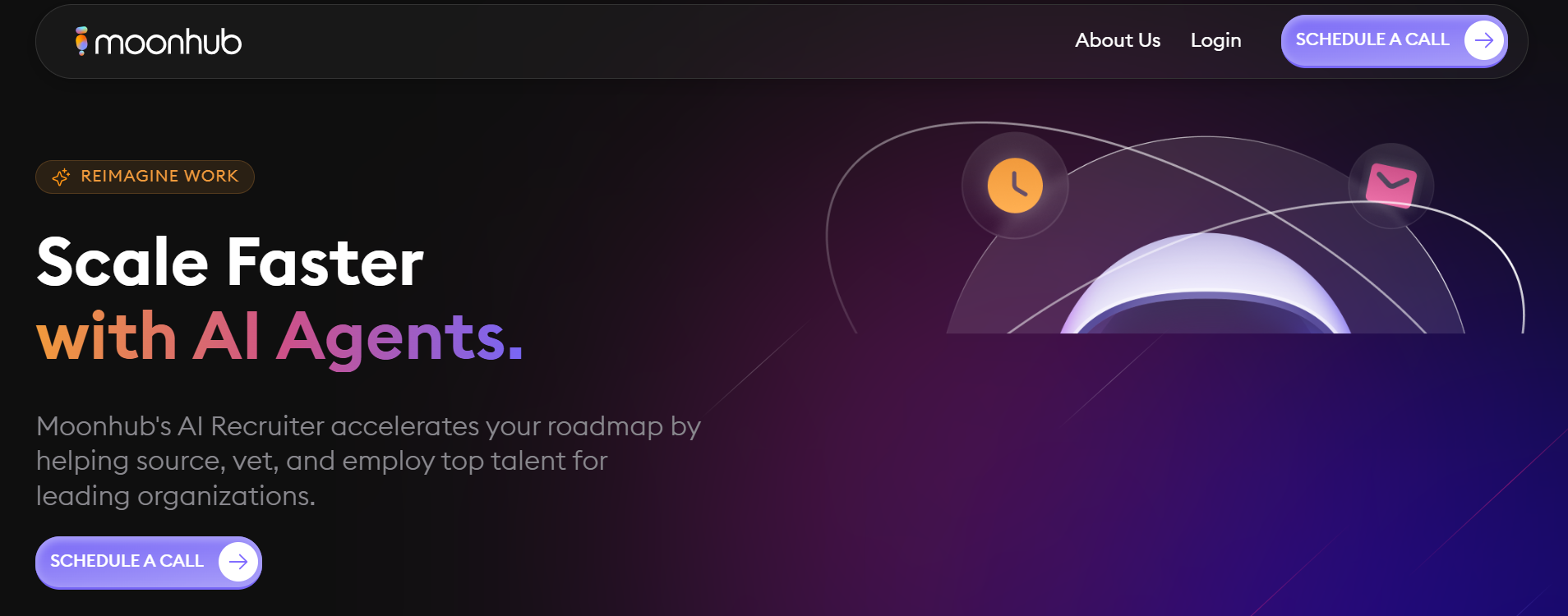



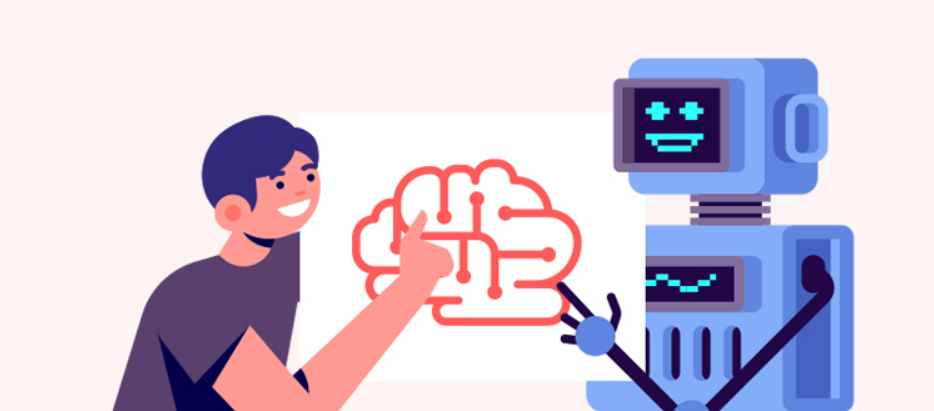
 扫一扫 加微信
hrtechchina
扫一扫 加微信
hrtechchina

